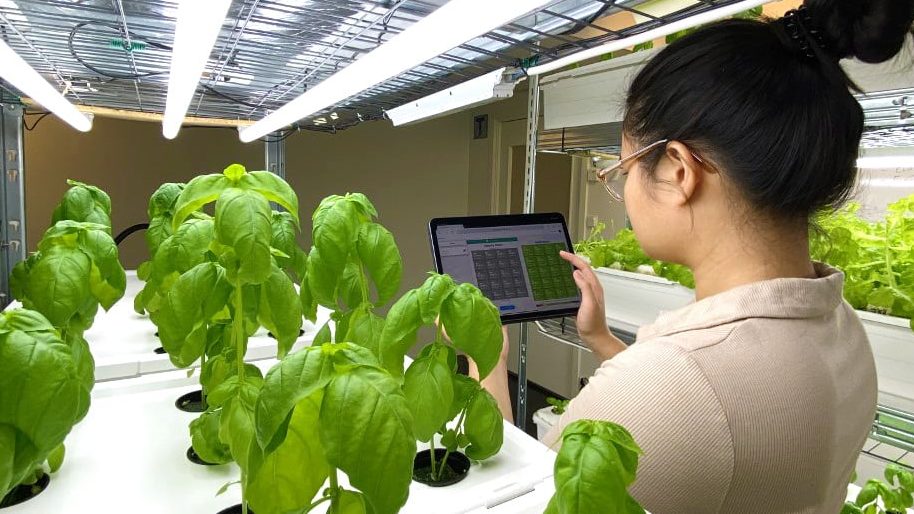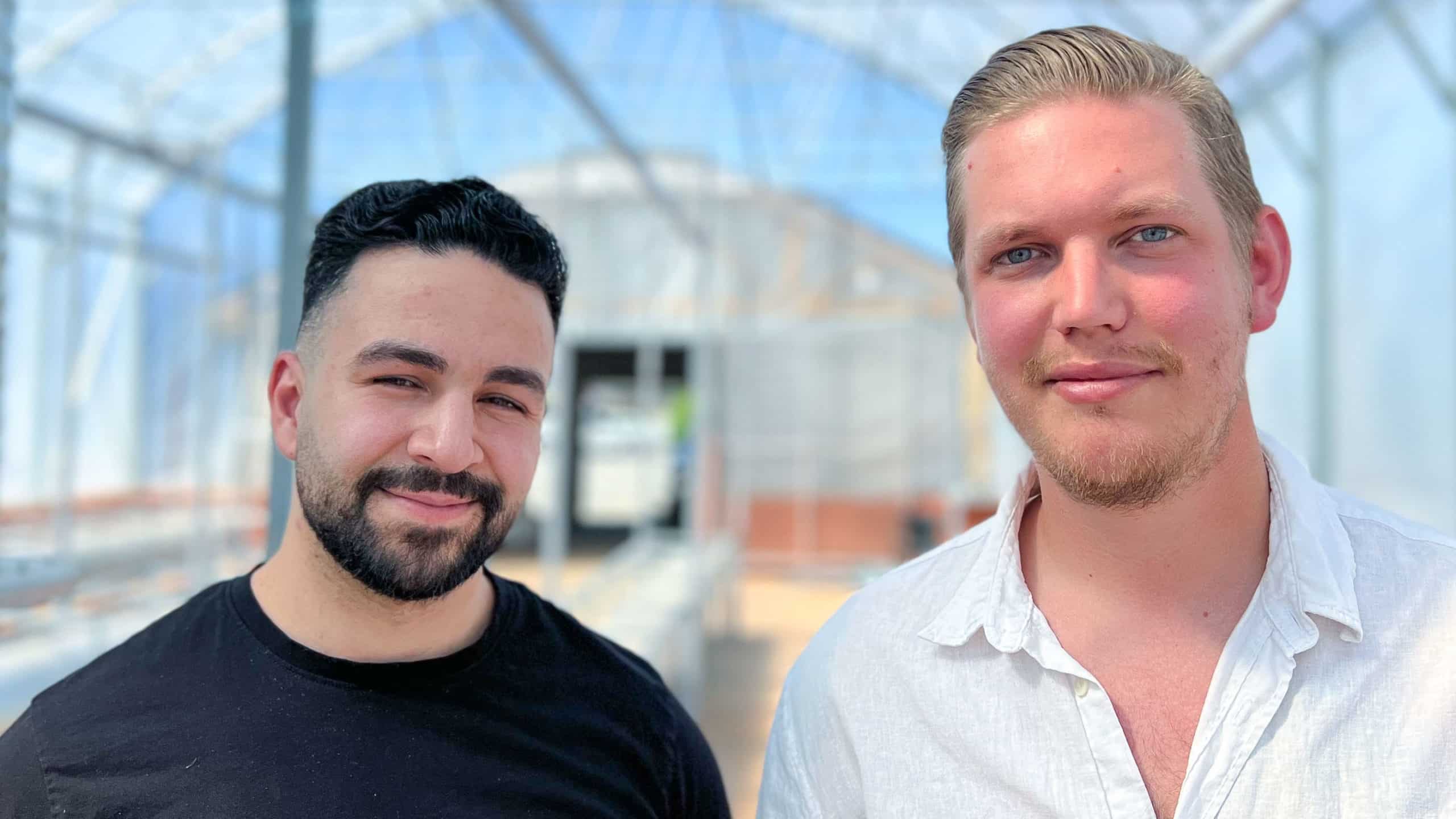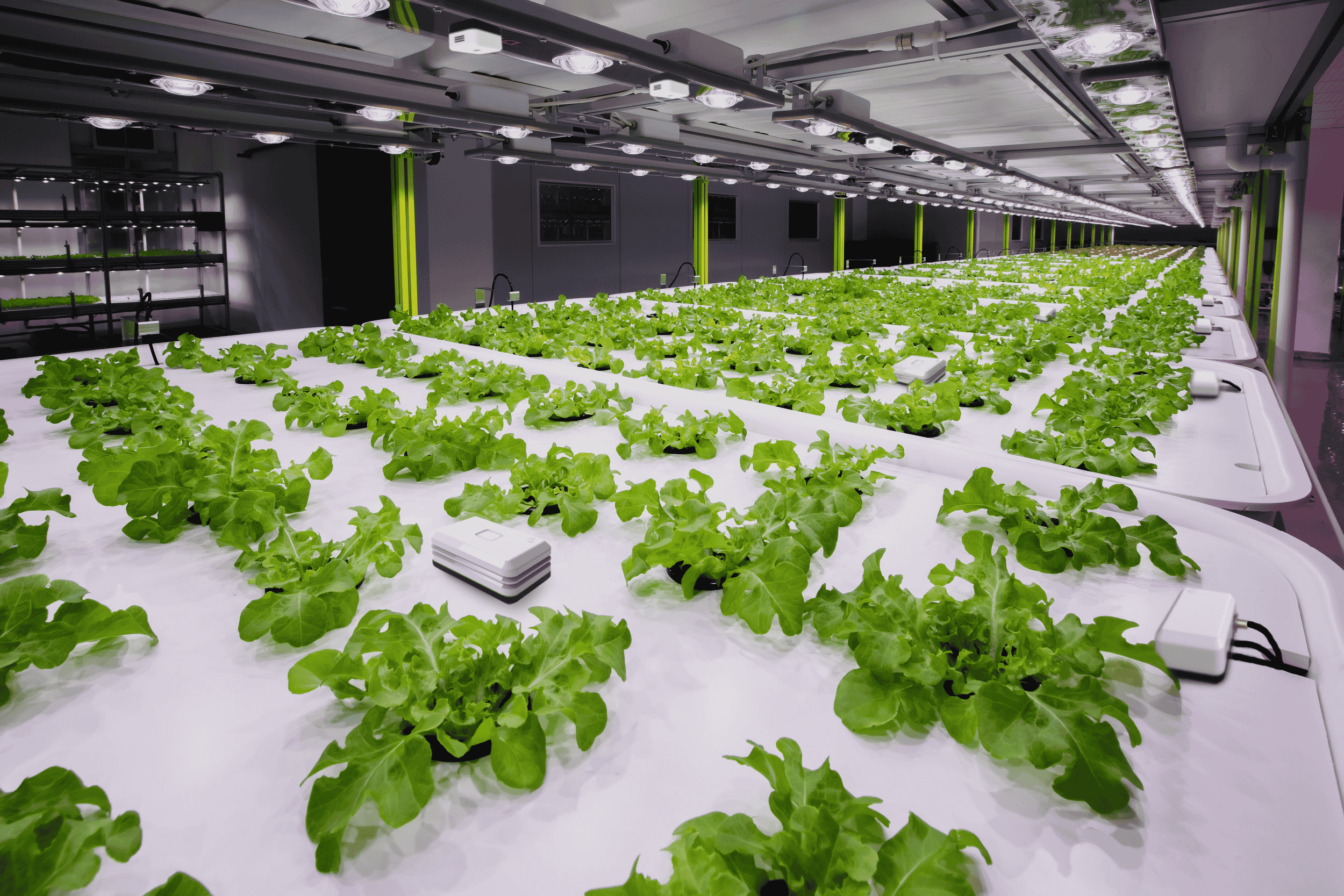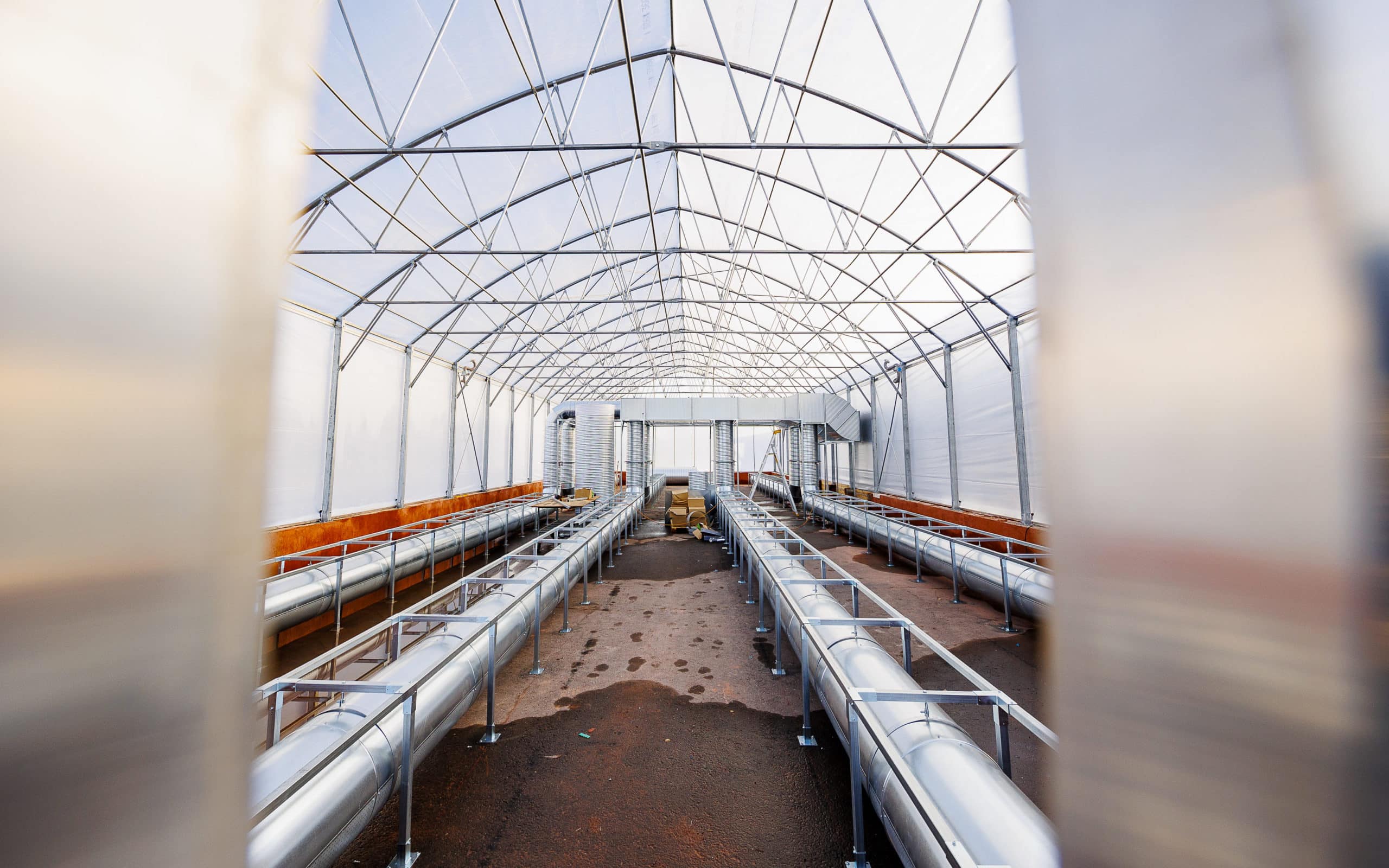Ecobloom’s technology will collect data and help us maximize cultivation in the greenhouse project. Now their CEO explains why their AI system means better sustainability and about the plans to establish themselves in Boden.
The three-dimensional graphics are dancing on the screen. Like a wild northern light in the starry sky on a chilly January evening. The colors change with the time of the video. Red, yellow, green, blue and purple.
What we see is a time-lapse video from a cultivation zone in a greenhouse in southern Sweden, where Ecobloom’s technology is set up. Green means that the plant’s conditions are optimal, purple shows low photosynthesis and red means that the plant is stressed.
Hamza Qadoumi, CEO and co-founder of the company Ecobloom, removes the presentation and logs on to a website.
– Here you see the greenhouse live, he says.
Suddenly, every 1,000 square meters of the greenhouse appears on the TV screen. Each and every one of the plants. Just like the graphics in the presentation, it is colors that shows us how the plant feels. Hamza hovers with the mouse pointer over some areas and receives information about air values, carbon dioxide content, temperature, water quality and how the plant develops.
– This overview is impossible to get when you are on the ground. Then you have to physically walk around and look at everything. But by creating a digital twin, we can see each section in a virtual environment and there we can analyze and study every aspect of the plant’s life cycle, says Hamza Qadoumi.
 The entire greenhouse can be monitored and viewed directly on the screen. Photo: Ecobloom
The entire greenhouse can be monitored and viewed directly on the screen. Photo: Ecobloom
Inside the greenhouse, sensors and high-tech cameras are set up that collect information that is impossible to perceive with human senses. For example, by measuring photosynthesis. They have also developed a data management system with artificial intelligence (AI), which means that the system learns to interpret the information collected.
– Simplified, we connect the entire cultivation to the cloud where we analyze every aspect of the life cycle and where we can use AI to make intelligent calculations and give the growers an insight into how they best optimize their food production.
Profitable and at the same time sustainable
The company is currently collaborating with one of Sweden’s largest indoor growers and their technology helps the company to reduce wastage, get a clearer picture of whether there is any part of the greenhouse that is more favorable to grow on, or if plants become stressed in a certain area during any time of the day.
With the technology, it is also possible to predict when it is optimal to harvest and detect diseases and pests at an early stage before it has time to spread to more plants.
– This makes the whole cultivation process more sustainable, but also more profitable as the system helps the grower to save resources. I personally think it is very cool that we have developed something that both increases the customer’s efficiency and at the same time is more sustainable for society. The two parameters do not always align, says Hamza Qadoumi.
He also emphasizes that although the technology may seem advanced, it is easy to use and can be adapted to all types of crops.
– The system can be used in all climate-controlled environments. Both greenhouses and vertical indoor plantations. We have, for example, our own vertical indoor cultivation which we use to test different conditions and teach the system to identify effects.
 Hamza Qadoumi, CEO of Ecobloom, and Manne Ek, gardeners in the greenhouse, went through how the technology should be installed and work in the greenhouse.
Hamza Qadoumi, CEO of Ecobloom, and Manne Ek, gardeners in the greenhouse, went through how the technology should be installed and work in the greenhouse.
Ecobloom is also one of the companies collaborating in the greenhouse project in the AF1 area in Boden. The project aims to utilize the waste heat from computer server halls and use that energy to grow fruit and vegetables in a subarctic climate – all year round.
Looking for the right partner
It is their technology that will make the greenhouse smart and that will collect data for the research linked to the project.
– The greenhouse here is just a first step in something that can be very large and long-term. And the solution with how the excess heat is used from other plants is something unique. It is an ecosystem already there. By adding AI intelligence makes it possible to reach new heights. The possibilities are enormous.
One of the benefits they see with the project is also to get in touch with potential partners in the research world and industries with which they can join forces to further develop their AI technology.
– Our system is very modular and can easily be integrated into existing systems. Therefore, we are very interested in finding companies that can use our AI technology to optimize cultivation. We also want to test the system together with research institutes, as we do together with Rise (Research Institutes of Sweden) in this project.

 Ecoblooms teknik ska samla in data till forskningsprojektet via högteknologiska kameror och sensorer. Men systemet kan bidra till ännu fler smarta lösningar. Foto: Bodens kommun och Ecobloom
Ecoblooms teknik ska samla in data till forskningsprojektet via högteknologiska kameror och sensorer. Men systemet kan bidra till ännu fler smarta lösningar. Foto: Bodens kommun och Ecobloom
When Hamza Qadoumi describes how their technology can be used to optimize cultivation, he shines.
– We know what our system can do today and what is our unique competitive advantage. There are natural partners that we can imagine, but what is so cool about this technology is that there may be companies that with the help of our technology can do things that we have not thought of today. We want to meet partners who work in a large market in, for example, ventilation, energy supply and water supply, where we know that our technology is useful.
– If I were to give examples of what we could do based on what we know today, it is that the system adapts the heat and light based on the optimal cultivation conditions. But we also collect lots of data and know exactly how the plant has measured during the entire cultivation period and when the harvest has taken place. That information could be something that the consumer himself can see in a store via a QR code. A form of quality assurance when you buy the food and an opportunity for the consumer to make even better conscious choices.
A future for smart greenhouse cultivation
Ecobloom has several international processes underway and is also looking for global companies to collaborate with. But the AI company also plans to expand its operations in Sweden and start up an office in Boden.
– We have followed Boden’s development for a while and we see the potential in everything that happens up here, it is bubbling up properly and we want to be part of that development. Today we are here to meet people linked to the project, see the greenhouse and talk about the project going forward. What will happen in the near future and more long-term. My gut feeling tells me that we will stay here for a long time considering what is planned.
– What also makes Boden so interesting is that everyone is involved. Politicians, industry, academia and startups. A large ecosystem, but at the same time very flat where everything progresses very quickly. Everyone sees the potential with what is happening here, wants to jump on and be a part of the development. Then it may be easier to share experience with each other. That makes Boden an interesting hub for us.
 The greenhouse will be heated by waste heat from a module that will simulate a small part of the energy released from a data center. Right now the installation gives an industrial feel, but already in the autumn the plants will move in. Photo: Photographic Sverige AB
The greenhouse will be heated by waste heat from a module that will simulate a small part of the energy released from a data center. Right now the installation gives an industrial feel, but already in the autumn the plants will move in. Photo: Photographic Sverige AB
The technology company was founded in 2018 and works to renew food production and agricultural technologies. Their AI model is developed to increase the efficiency of the cultivation process while improving sustainability. Something that they see as a prerequisite for meeting the global climate goals with today’s fast-paced lifestyle.
– Although there are of course great business incentives in our system, the big driving force is that our product can actually change the view of food production and make the process much more sustainable. It’s incredibly cool, says Hamza Qadoumi
In the autumn, the Greenhouse project enters the next phase. This means that the plants will move into the greenhouse and be grown using waste heat. Ecobloom will collect data and make it possible to monitor the effect in real time while the research institute Rise gets to test different theories.